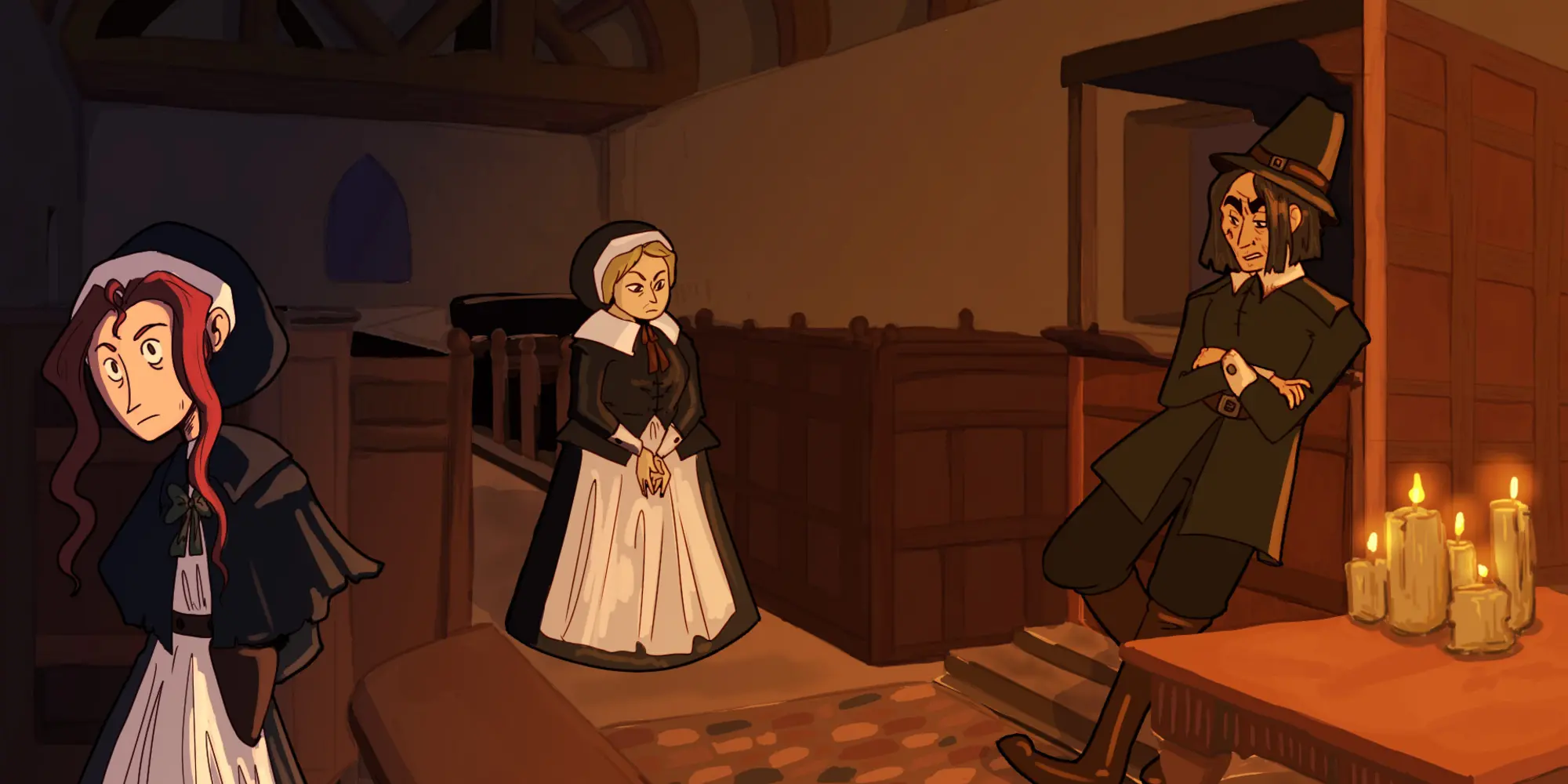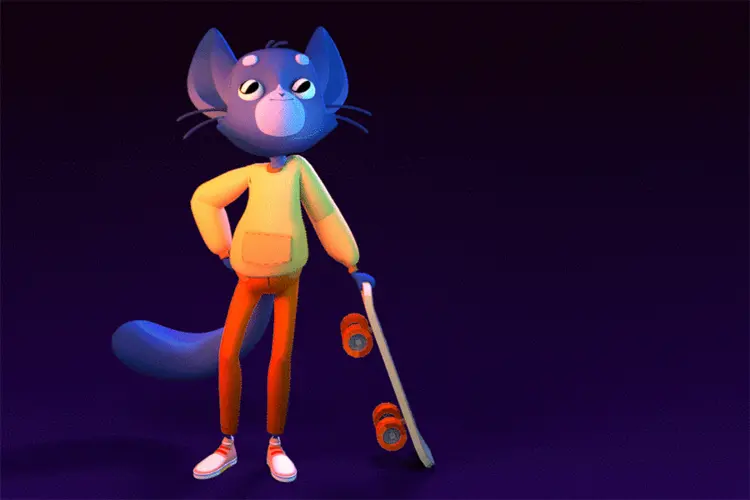
Good Design is the Magic Behind AI Game
Carnegie Mellon students make AI shine in new ChatGPT-based game
Media Inquiries
A tragedy looms over the town of Howlsbend — and asking the right questions of artificial intelligence may be the only way to discover the witch behind this wickedness.
Chatbot AI(opens in new window) a team of Carnegie Mellon University Entertainment Technology Center (ETC)(opens in new window) students, have created a role-playing video game, Hysteria in Howlsbend, set in a fictional colonial town. The player takes the role of the deputy governor of Massachusetts and must interview three townsfolk to determine which of them is the witch who killed the local reverend.
Even Charles Agriogianis, a game designer on the project, doesn’t know what the townsfolk will say. They are voiced, in part, by AI.
"We can only exert so much control over what it's doing, so we had to think carefully about narrative in the game and how we defined a successful experience," said Agriogianis, a student at the ETC — a master's program that prepares students for careers in entertainment technology and interactive experience development.
Players can chat one-on-one with characters Hope, Elizabeth and Adam to determine who is telling the truth, who knows what and, ultimately, who is the witch. Powered by ChatGPT, the characters will respond to anything. Players could ask "Hope, do you think Adam is the witch?" or "Where did you get your hat?"
Amber Griffith, a narrative designer, game designer and 2D artist on the team, said incorporating AI means no two playthroughs have been the same.
"Traditional games use a dialogue tree to voice characters, which can give players a fair amount of freedom, but inevitably there's someone who wants to ask other additional questions that the game developers weren’t prepared for," Griffith said. "We are using AI to streamline the process so we can focus on who these characters are fundamentally, with room for creativity."
The carefully constructed narrative and game design are crucial to make sure the player doesn't get bored or lost, and key aspects of the story have been meticulously constructed to move the story forward. For example, as time passes, the crowd outside becomes more and more raucous, putting pressure on the player to accuse someone.
The way characters react to questions moves the story along, too.
"Adam doesn't like when people ask about his kids, so if you continue to do that, he might transition to a different emotional state and reveal some new information," Griffith said.
Players can detect these changes through both the dialogue and visual representations of the character, a feat accomplished by a lot of human writing and design work. Each character has around 250 dialogue examples and 10 visual depictions that indicate emotional states unique to them, including defensive, despondent, angry and repentant. Agriogianis said it has a big effect on how players interact with the game.
"At one point we had a bug where the AI characters were speaking pretty similarly, which is not what we want. But because the art was changing, and because of the slight difference in what they were saying, players still interpreted huge differences. That just affirmed to us that visuals and all of the infrastructure around the AI is really important," Agriogianis said.
He reiterated the amount of writing and design work required to make the game fun and engaging.
"There's a lot more design than people realize when they hear about a game made with AI. The idea that open-ended conversation is a magic bullet is wrong. You need to look to other mediums, like role-playing and acting, to get people to engage with the experience," he said.



